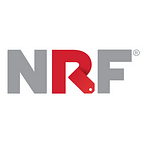I’ll know it when I see it: How visual tech inspires shoppers
There’s a new stop on the customer’s path to purchase — planning, visualizing, searching and finding things they don’t have a word for.
At NRF’s Shop.org conference in Los Angeles, Pinterest’s Amy Vener and Wayfair’s Mike Festa talked about the role visual technology plays in the “I’ll know it when I see it” stage of shopping.
Pinterest’s 200 million members have become accustomed to thinking (and searching) in images, and Pinterest delivers: Anything you see leads to more ideas you’ll find appealing — the company was founded in 2010 with the mission to help people discover the things they love and inspire them to do those things in their daily lives.
In a way, that’s not too different from the traditional store experience — it was all about browsing and developing relationships — with a focus on transactions and increasing foot traffic. Ecommerce is all about getting the right products to the right people faster — it’s optimized for transactions. At Shop.org, Pinterest’s head of retail strategy Amy Vener talked about the platform’s focus on inspiration through visual discovery technology.
“There’s a need for helping consumers discover possibilities in their lives,” Vener said. “It’s less about the actual transaction, and more about what could that product represent in my life … . In that process, Pinterest has done a lot around visual discovery technology that allows the consumer to imagine what possibilities these products could have in their lives.”
New technology is enabling even more opportunities for retailers in the inspirational phase of the customer journey. Target and Pinterest recently partnered to place Pinterest’s visual search technology, Lens, into Target’s apps and website. The tool will allow Target shoppers to take a photo of any object and find similar items at Target.
Wayfair uses augmented reality to help people dream within the boundaries of their physical spaces. It’s integrated into the company’s mobile app; customers looking for furniture can choose a product and click to use their device’s camera to see how it will look in the room. Mike Festa, who leads Wayfair’s research and development team, said technology like AR lets shoppers get a good sense of how a piece of large furniture will look and “have the confidence to order it directly.”
The challenge to using the technology broadly, Festa said, is content. Wayfair has been working with suppliers to create content, but ultimately the company’s been doing it themselves to demonstrate the viability. “The technology needs to give us the data to say, ‘Yes, having this 3D content is going to drive certain metrics,’” he said.
Wayfair makes its 3D models available to companies doing location staging or new construction; it’s straightforward product placement in people’s dreams of a new life. They may not buy that new apartment, but they can get that table — or one that looks like it. “Our hope is that getting more content out there will drive more traffic to buy the physical thing,” Festa said.
The most successful retailers driving incremental growth, Vener said, are those that take insights around consumer behavior and create contextually relevant and personalized content “in a way that courts the consumer through that process, from inspiration to discovery to evaluation all the way to going to your stores and buying. That is a different kind of communication.”
See the show recap:
More stories from Shop.org:
